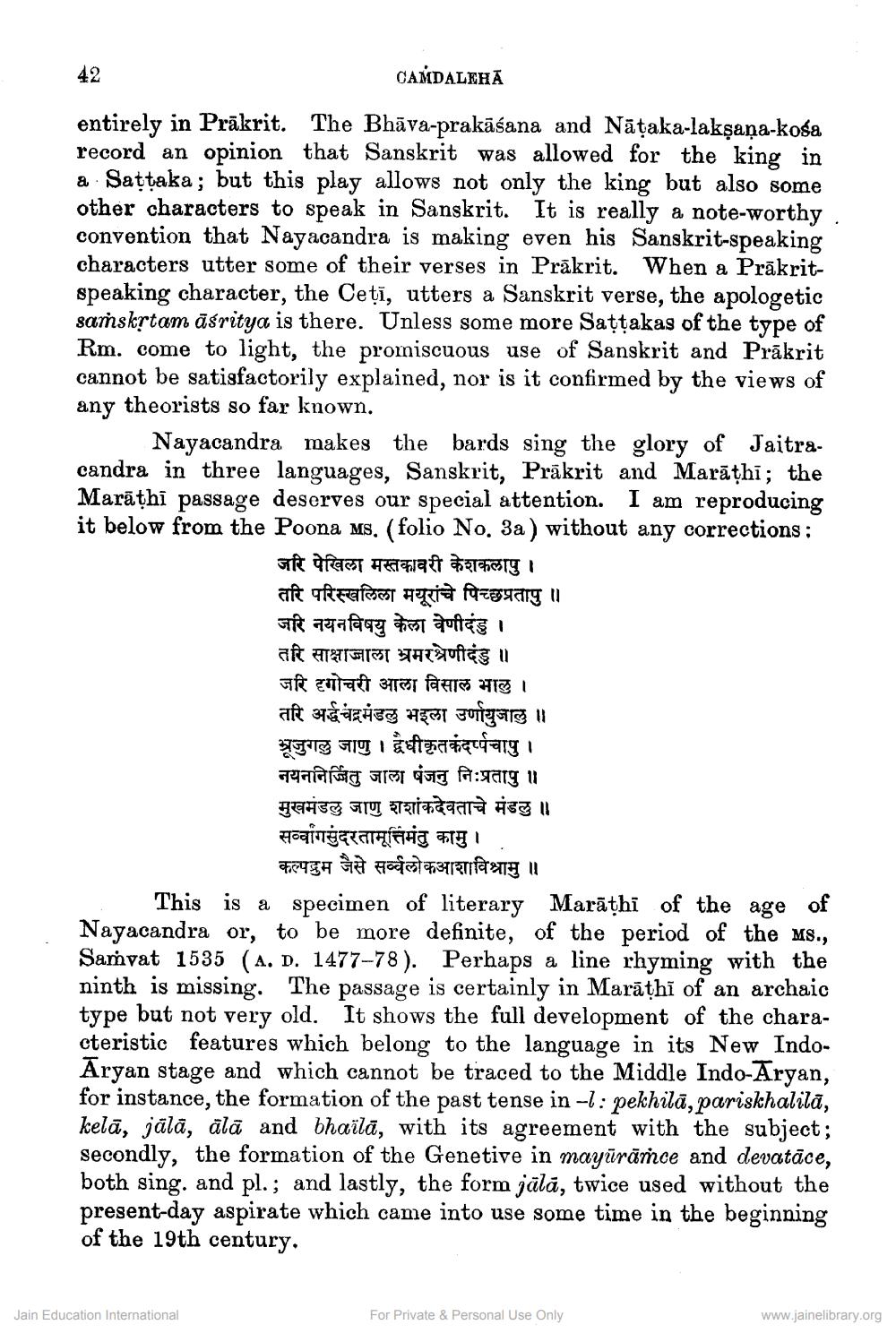________________
42
CAMDALEHĀ
entirely in Prākrit. The Bhāva-prakāśana and Nātaka-lakşaņa-kosa record an opinion that Sanskrit was allowed for the king in a Sattaka; but this play allows not only the king but also some other characters to speak in Sanskrit. It is really a note-worthy convention that Nayacandra is making even his Sanskrit-speaking characters utter some of their verses in Prākrit. When a Prākritspeaking character, the Cetī, utters a Sanskrit verse, the apologetic saṁskrtam āsritya is there. Unless some more Sattakas of the type of Rm. come to light, the promiscuous use of Sanskrit and Prākrit cannot be satisfactorily explained, nor is it confirmed by the views of any theorists so far known.
Nayacandra makes the bards sing the glory of Jaitracandra in three languages, Sanskrit, Prākrit and Marāthī; the Marāthī passage deserves our special attention. I am reproducing it below from the Poona ms. (folio No. 3a) without any corrections:
जरि पेखिला मस्तकावरी केशकलापु। तरि परिस्खलिला मयूरांचे पिच्छप्रतापु ॥ जरि नयनविषयु केला वेणीदंडु । तरि साक्षाजाला भ्रमरश्रेणीदंड ॥ जरि दृगोचरी आला विसाल भालु । तरि अर्द्धचंद्रमंडलु भइला उर्णायुजालु ॥ भ्रूजुगल जाणु । द्वैधीकृतकंदर्पचापु। नयननिर्जितु जाला षंजनु निःप्रतापु ॥ मुखमंडलु जाणु शशांकदेवताचे मंडलु ॥ सव्वांगसुंदरतामूर्तिमंतु कामु।
कल्पद्रुम जैसे सर्व्वलोकआशाविश्रामु ॥ This is a specimen of literary Marāthī of the age of Nayacandra or, to be more definite, of the period of the ms., Saṁyat 1535 (A. D. 1477-78). Perhaps a line rhyming with the ninth is missing. The passage is certainly in Marāthī of an archaic type but not very old. It shows the full development of the characteristic features which belong to the language in its New IndoĀryan stage and which cannot be traced to the Middle Indo-Aryan, for instance, the formation of the past tense in -1 : pekhilā, pariskhalilā, kelā, jālā, ālā and bhailā, with its agreement with the subject; secondly, the formation of the Genetive in mayūrāṁce and devatāce, both sing. and pl.; and lastly, the form jālā, twice used without the present-day aspirate which came into use some time in the beginning of the 19th century.
Jain Education International
For Private & Personal Use Only
www.jainelibrary.org




